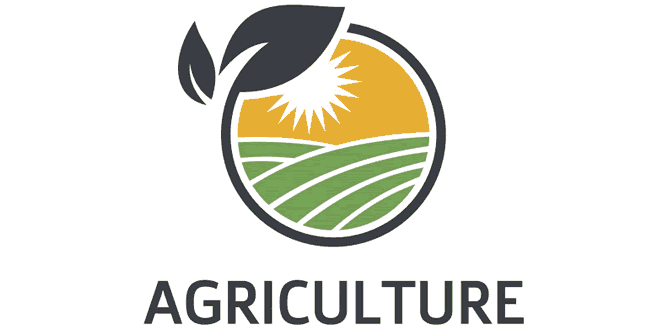NCERT 10th Class (CBSE) Social Science (Geography): Agriculture Quiz
31 Multiple Choice Questions related to NCERT 10th Class (CBSE) Social Science: Agriculture Quiz:
- The art and science of cultivating soil, raising crops and rearing livestock including animal husbandry and forestry.
- It is a type of agriculture / farming which is practised on small patches of land with the help of primitive tools like hoe, doa, digging sticks and family / community labour.
- The crops which are grown in winter from October to December and harvested in summer from April to June. Wheat, barley, peas, gram are some examples of rabi crops.
- Rice, millet, maize, groundnut, jute and cotton.
Your Score:
Your Ranking:
Agriculture Quiz – Chapter Summary
Types of Farming in India
Primitive Subsistence Farming: This type of farming is practiced on small patches of land. Primitive tools and family / community labour are used in this type of farming. The farming mainly depends on monsoon and natural fertility of soil. Crops are grown as per the suitability of the environmental condition.
This is also called ‘slash and burn’ agriculture. A patch of land is cleared by slashing the vegetation and then the slashed plants are burnt. The ash; thus obtained is mixed with the soil and crops are grown.
This type of farming produces just enough crops to sustain the family. After a couple of seasons, the patch is left fallow and a new patch of land is prepared for farming. This allows the earlier patch of land to replenish its fertility through the natural process.
Different Names of Slash and Burn Farming:
Slash and Burn Farming in India
| Name | Regions |
|---|---|
| Jhumming | Assam, Meghalaya, Mizoram and Nagaland |
| Pamlou | Manipur |
| Dipa | Bastar (Chhattisgarh) and Andaman & Nicobar Islands |
| Bewar or Dahiya | Madhya Pradesh |
| Podu or Penda | Andhra Pradesh |
| Pama Dabi or Koman or Bringa | Odisha |
| Kumara | Western Ghats |
| Valre or Waltre | South eastern Rajasthan |
| Khi | Himalayan belt |
| Kuruwa | Jharkhand |
Although there are different names for slash and burn farming in different regions of India, the name ‘Jhum Cultivation’ or Jhuming is commonly used in this context. The following table shows various names for slash and burn farming in different countries.
Slash and Burn Farming in World
| Name | Countries |
|---|---|
| Milpa | Mexico and Central America |
| Conuco | Venezuela |
| Roca | Brazil |
| Masole | Central Africa |
| Lading | Indonesia |
| Ray | Vietnam |
Intensive Subsistence Farming:
This type of farming is practiced in densely populated areas. This involves high degree of use of biochemical inputs and irrigation. There is huge pressure of population on this type of farming.
Problems of Intensive Farming: Division of land through successive generation leads to plot size getting smaller and smaller. This makes it impossible to properly manage the farm inputs. Moreover, large-scale farming is not possible in that case.
Commercial Farming:
This type of farming is done with the sole purpose of selling the farm produce. Various modern inputs are used in this type of farming, e.g. HYV (High Yielding Variety) seeds, chemical fertilisers, insecticides and pesticides. Punjab, Haryana, Western UP and some parts of Maharashtra are the areas where commercial farming is done on large scale. However, this type of farming is also done in many other states; like Bihar, West Bengal, Tamil Nadu, etc.
Plantation: In this type of farming, a single crop is grown on a large area. Plantation requires intensive capital and a large number of workers. Most of the produce from a plantation is used in various industries. tea, coffee, rubber, sugarcane, banana, etc. are important plantation crops. Tea is mainly produced in the tea gardens of Assam and North Bengal, coffee is produced in Tamil Nadu, and banana is produced in Bihar and Maharashtra. Plantation requires a well developed network of transport and communication, processing industries and a good market.
Cropping Pattern in India
India has three cropping seasons – rabi, kharif and zaid.
- Rabi: Rabi crops are also known as winter crops. They are sown from October to December and harvested from April to June. Wheat, barley, pea, gram and mustard are the important rabi crops. Punjab, Haryana, Himachal Pradesh, Jammu & Kashmir, Uttarakhan and Uttar Pradesh are the important producers of rabi crops.
- Kharif: Kharif crops are also known as summer crops. They are sown at the beginning of monosoon and harvested in September-October. Paddy, maize, jowar, bajra, tur, moong, urad, cotton, jute, groundnut and soyabean are important kharif crops. Assam, West Bengal, coastal regions of Orissa, Andhra Pradesh, Tamil Nadu, Kerala, Maharashtra, Uttar Pradesh and Bihar are important rice growing states. In Assam, West Bengal and Orissa; three crops of paddy are grown in a year. These are called Aus, Aman and Boro.
- Zaid: The zaid season falls in between the rabi and kharif seasons. Watermelon, muskmelon, cucumber, vegetables and fodder crops are some of the crops grown in this season. Sugarcane is planted in this season but takes almost a year to grow.
 Class Notes NCERT Solutions for CBSE Students
Class Notes NCERT Solutions for CBSE Students





